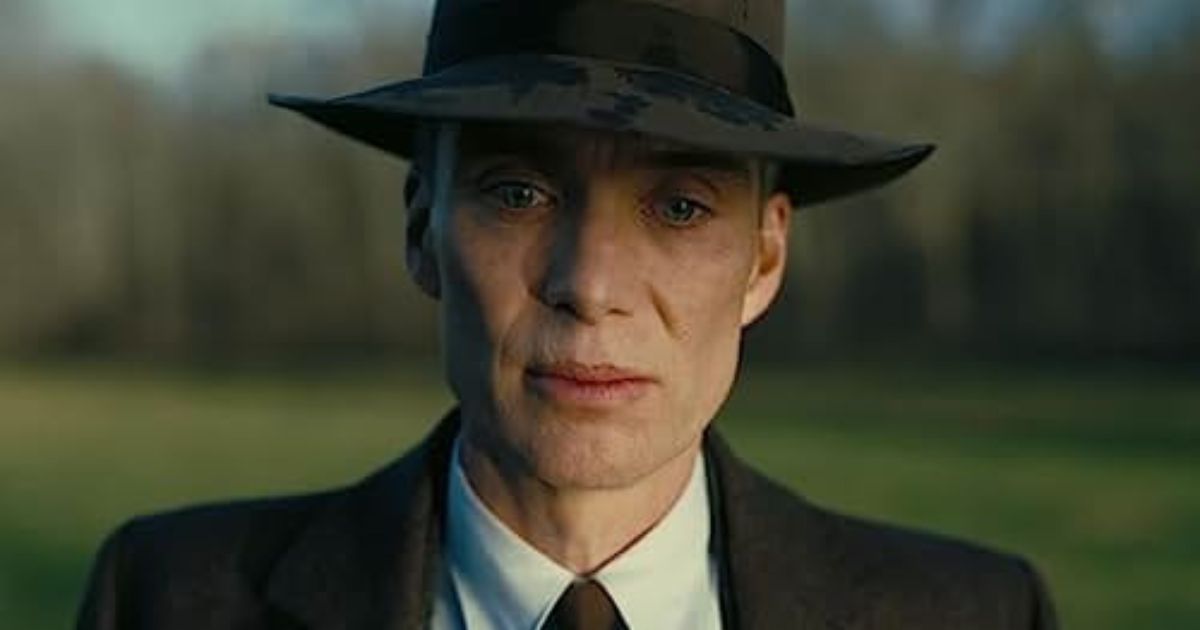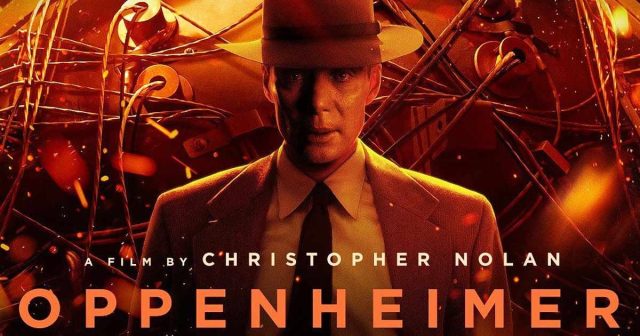Synopsis
The film opens with a flashback to Oppenheimer’s childhood, foreshadowing his fascination with science. It then moves forward to his days as a young physicist under the mentorship of Karl Compton. Nolan structures the story across multiple timelines, weaving past and present into a cohesive whole. We see Oppenheimer struggle with moral questions as he joins the Manhattan Project during World War II. The narrative shifts between laboratories in Los Alamos and public hearings that question his loyalty. Key moments include the initial successful bomb test and the aftermath of its deployment over Hiroshima. The film does not shy away from the horrors of nuclear power nor the ethical burden carried by its creator. Nolan balances intimate character moments with sweeping historical set pieces to maintain emotional resonance. Interspersed are scenes of Oppenheimer’s personal life, including his relationships with Kitty and Jean Tatlock. The storytelling allows viewers to piece together events in a non-linear fashion while staying invested. By the climax, we have a full view of Oppenheimer’s genius and inner turmoil leading to a moment of reckoning.

Direction and Writing
Nolan co-wrote the screenplay with frequent collaborator Eric Roth, bringing depth and clarity to the complex story. The writing avoids heavy exposition by using dialogue, flashbacks, and visual cues to convey scientific concepts. Time is treated as a malleable element allowing the montage of scenes to reflect Oppenheimer’s internal state. Nolan’s direction is precise and deliberate, guiding the audience through moral ambiguity without offering easy answers. The pacing in specific sequences feels reflective, inviting viewers to consider the human cost of scientific breakthroughs. The script also explores themes of ambition, guilt, and legacy through well-crafted character arcs. Even more minor roles deliver memorable moments thanks to sharp dialogue and concise scene construction. The narrative choices lead to an immersive experience where historical events feel immediate and personal. Nolan avoids romanticizing the bomb; instead, he frames it as a tragic culmination of human brilliance and hubris. Overall, the direction and writing work in concert to create a film that challenges the audience intellectually and emotionally.
Performances
Cillian Murphy’s performance as Oppenheimer is the emotional backbone of the film. He embodies both genius and vulnerability, delivering a portrayal that is nuanced and haunting. Emily Blunt as Kitty Oppenheimer provides a grounded perspective, balancing the relentless scientific drive of her husband. Her performance conveys strength, worry, and frustration in equal measure. Matt Damon, in a supporting role, brings warmth and dry wit to a character grappling with his own ethical dilemmas. Robert Downey Jr delivers a surprising turn as Lewis Strauss, showcasing Nolan’s ability to elicit unexpected depth. The ensemble cast includes many veteran actors, each leaving a distinct impression despite limited screen time. Dialogue exchanges feel authentic, driven by strong character work and clear motivations. The chemistry between leads adds an emotional resonance that elevates key story beats. Even minor characters like opposing counsel raise essential questions about accountability and justice. Strong performances help maintain narrative tension across a three-hour runtime. Nolan’s casting choices were instrumental in bringing this ambitious project to life.
Visuals and Cinematography
Hoyte van Hoytema’s cinematography is a masterclass in capturing scale and intimacy within the same frame. Nolan’s extensive use of IMAX cameras delivers stunning clarity for both wide landscape shots and close-up portraits. The Trinity test sequence is a standout showcasing restraint before unleashing overwhelming visual power. Color palette shifts reflect mood changes, moving from warm desert scenes to cold government hearing rooms. Practical effects are favored over CGI, lending authenticity to key sequences such as tunnel tests and crowd reactions. Framing techniques underscore themes of isolation, with characters often shown dwarfed by technical machinery. Slow zooms and long tracking shots create a sense of lingering unease that complements the score. Light and shadow play a crucial rol,e particularly in scenes where Oppenheimer wrestles with his conscience. The visual design embraces period details from laboratory interiors to public monuments, immersing viewers in the era. Editing choices allow transitions between locations and timelines to feel seamless and purposeful. Wide shots of the New Mexico desert evoke a ghostly beauty that contrasts sharply with the destructive power being harnessed. Extreme close-ups on eyes and hands emphasize the human cost of scientific discovery and the weight of decision-making. Visual motifs such as recurring images of clocks and test tubes reinforce the film’s themes around time and experimentation. Overall, the cinematography elevates the movie into an immersive sensory experience that is both grand and introspective.

Music and Sound
Ludwig Goransson’s score pulses with tension, weaving electronic drones, orchestral swells, and haunting motifs. Sound design blends realistic ambient noises with stylized elements to heighten dramatic beats. The opening sequence features a low-frequency rumble that immediately sets a tone of dread. Silence is used strategically before key moments such as the Trinity detonation, creating a stark emotional contrast. Dialogue clarity is maintained even during chaotic scenes, ensuring every word carries weight. Music cues often overlap with visual transitions, reinforcing the non-linear narrative structure. Experiments in diegetic sound take viewers inside laboratories, letting them experience every mechanical click and hum. The score reaches a crescendo during pivotal confrontations, adding urgency to the courtroom drama. Themes from the central motif recur in quieter scenes, reminding the audience of the film’s stakes. Overall, the sound and music design work seamlessly to immerse viewers in both the action and emotional landscape. Sound mixing balances large-scale sequences with character-focused dialogue, ensuring emotional moments resonate. The audio choices underscore the film’s central question about the consequences of incredible scientific achievement.
Themes and Symbolism
The central theme of moral responsibility runs throughout, asking what price humanity pays for progress. Nolan explores the duality of creation and destruction, framing the atomic bomb as both marvel and terror. Symbolic images of water and fire recur, aligning Oppenheimer’s internal conflict with elemental forces. Time fragmentation mirrors fractured human memory and the burden of recollection. The film also examines the role of government oversight and the tension between individual conscience and national security. Recurring references to ancient texts and mythological figures elevate the narrative into philosophical territory. Character interactions highlight the clash between scientific idealism and political ambition. Silence and breathing sounds become symbolic reminders of the fragile line between life and annihilation. Visual metaphors such as shadow play and reflection emphasize dual identities and hidden motives. Overall, these themes coalesce into a meditation on power ethics and human legacy. The film invites multiple interpretations, allowing viewers to debate the nature of progress long after it ends. Oppenheimer’s journey becomes a case study in how individuals wrestle with the consequences of their own genius.
Pacing and Editing
Jennifer Lame’s editing ensures a rhythm that balances exposition, drama, and spectacle across a three-hour runtime. Rapid cuts are reserved for moments of tension, while extended takes emphasize character reflection and dialogue. Non-linear structure could feel disorienting, but careful scene transitions guide viewers through complex timelines. Flashbacks are deployed at strategic points to shed light on motivations without stalling the narrative flow. The film takes calculated pauses in key moments, letting emotional beats breathe. Action sequences, including test preparations, unfold with precision, capturing both technical detail and human stakes. Courtroom drama scenes tend to rely more heavily on sustained dialogue and subtle reaction shots. Overall, the pacing effectively supports the weight of the subject matter, fostering contemplation rather than relying solely on adrenaline. At over three hours, it demands patience but rewards viewers with layered storytelling and thematic complexity.
Audience Reception and Impact
Since its release, the film has sparked conversations about the ethical dimensions of scientific research. Critics praise the ambitious storytelling while acknowledging the demands it places on audience attention. Many highlight Cillian Murphy’s performance as Oscar-worthy and name Goransson’s score as one of the year’s best. Social media discourse centers on debates around nuclear power and the historical context presented in the film. Viewers have responded positively to the immersive visuals and emotional depth balanced with intellectual rigor. Some note the film may challenge casual viewers due to its length and complex chronology. Academic circles have shown interest in using the film as a teaching tool to discuss history and ethics. Box office numbers reflect strong interest signaling Nolan’s continued ability to draw audiences to thought-provoking cinema. The film legacy will likely extend beyond the big screen, inspiring books, podcasts, and academic studies.
Conclusion
Oppenheimer stands as one of Nolan’s most ambitious works, blending historical drama, psychological thriller, and philosophical inquiry. The film excels through meticulous direction, powerful performances, and an immersive audiovisual design. It challenges viewers not only to witness history but to reflect on the moral ramifications of human ingenuity. While demanding in length and complexity, it rewards patience with a rich cinematic experience. Nolan has crafted a modern epic that resonates on both intellectual and emotional levels. Fans of Nolan or those curious about history will find this film an unforgettable journey. Ultimately, Oppenheimer is a masterclass in how cinema can illuminate the human condition and the pursuit of knowledge. The film affirms Nolan’s status as a filmmaker unafraid to tackle weighty subjects with style and substance. In the end, it is a testament to the power of storytelling to confront the darkest and brightest facets of humanity.
For Further Reading, Explore Barbie Movie Review: Margot Robbie’s Dreamhouse Delivers More Than Pink









